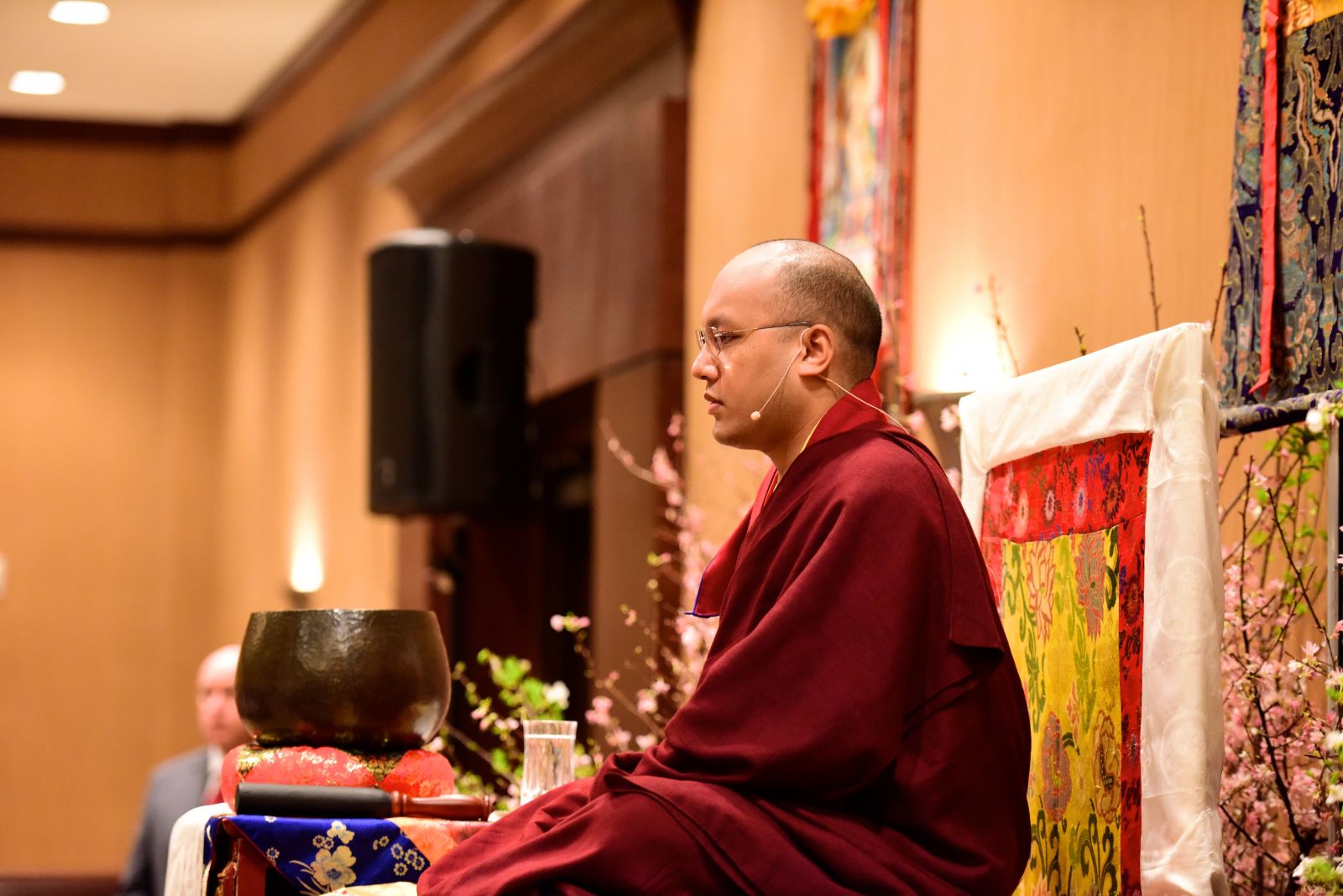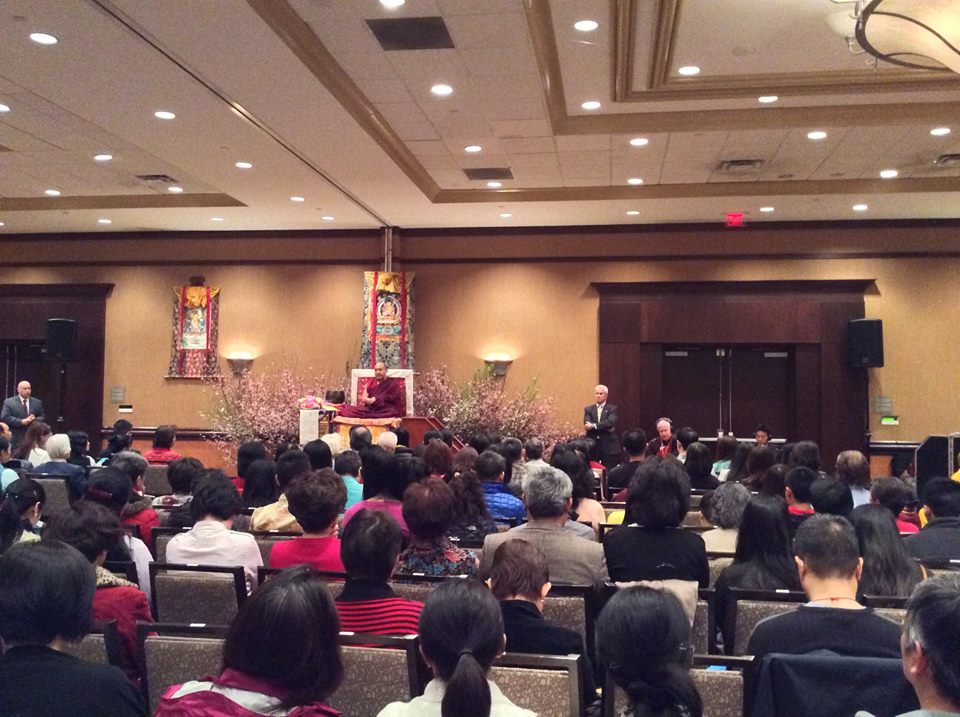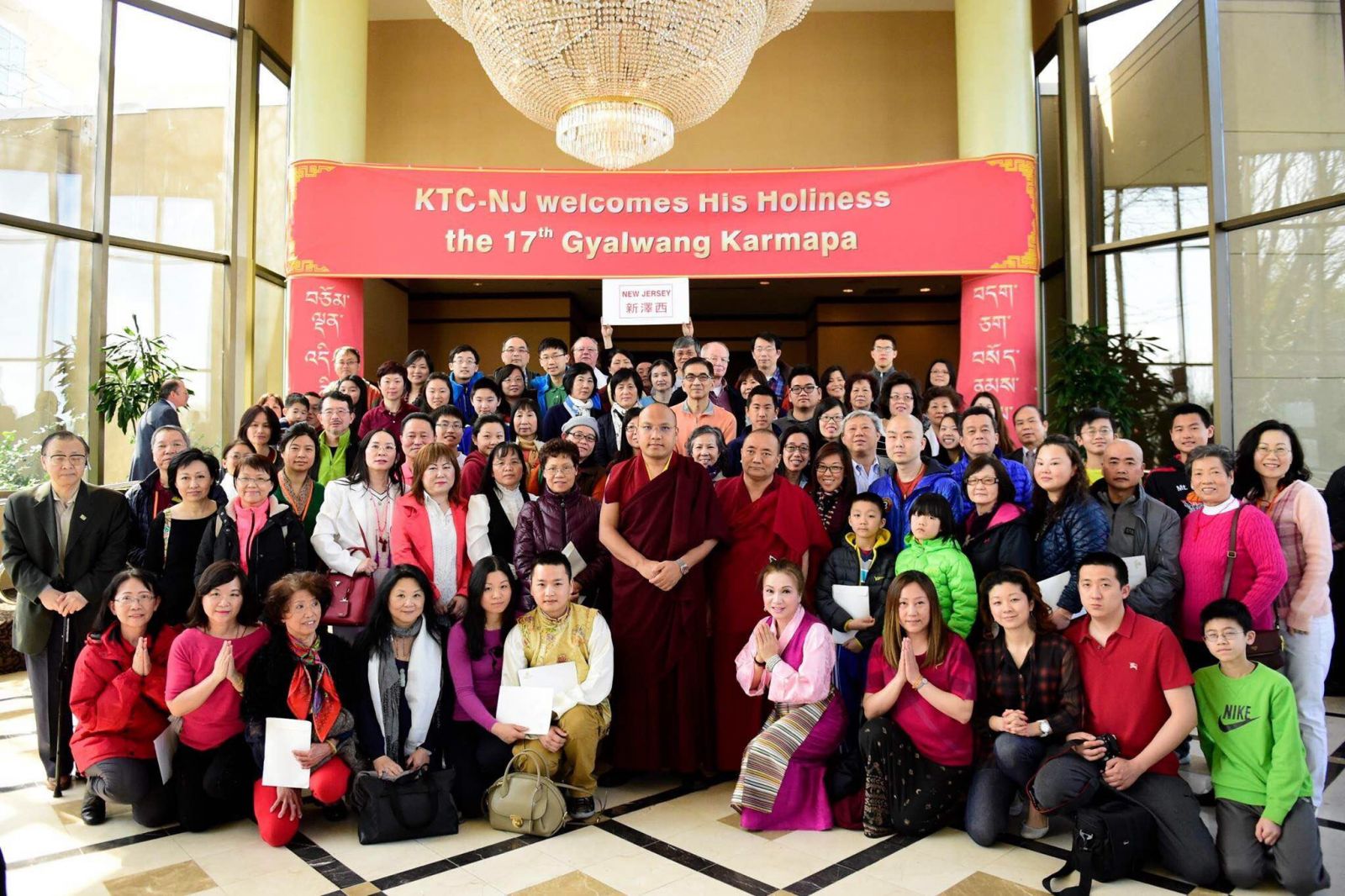KTC-NJ Events
Events:
|
April 5, 2015 - April 5, 2015HH 17th Karmapa Meditation Teaching for KTC-NJ members(April 5, 2015 – Mount Laurel, New Jersey) His Holiness the Karmapa spent the morning with members of the Karma Thegsum Chöling-New Jersey (KTC-NJ) Dharma center that is currently hosting him in southern New Jersey. In a session devoted to meditation instructions and answering practice questions, followed by group photos, His Holiness offered pith instructions and guided a meditation session for some 375 center members. As he had done the day before in the public teachings held in the same venue, the 17th Karmapa began with an apparently heartfelt disclaimer that he himself had very little personal experience in meditation, yet went on to deliver the sort of pith teaching on meditation that made his humility all the more striking to those present. He noted that one of the most widely known forms of meditation involves focusing one’s attention on the breath. “One of the reasons for this,” he commented, “is that we are breathing all the time. Because our breath is an ongoing, pre-existing thing, it does not have to be created for the purpose of meditation.” This underscores the fact that meditation is not aimed at seeking out new experiences or reaching some new state. Rather, he stated, we notice the breath by directing our mind to what is already present, without altering or fabricating anything. “We are simply using the awareness of breathing as a focus for developing the mind’s ability to be aware of a chosen object,” the 17th Karmapa said. “I think there is another particular reason for focusing the mind on breathing,” he added. “The breath is critically necessary for us to remain alive—after all if we stop breathing we stop living. We normally pay no attention to it but take it for granted. Therefore when you focus your mind on the breath, this also instills in you a greater appreciation of being alive, a sense of delight or rejoicing in the fact that your life is continuing.” He then reflected on the methods used for meditating on the breath, noting that one way is to count the breath. “But,” he observed, “counting can be difficult and actually become a distraction. This depends on the individual, but for many people, using the counting breath technique is problematic. There are other traditions in which one does not count the breath. One simply observes the in-breath and the out-breath, allowing one’s mind to be merely aware of the breathing, allowing one’s mind to rest on or in the exhalation and inhalation. I think this may be better than counting. “As for how one breathes when directing the mind to the breath,” he continued, “one should breathe naturally as one does usually. There is no special manipulation or control of the breathing. You do not try to breathe in and out with more force or slow down the breathing or speed it up or anything like that. I mention this because sometimes people expect that a technique where the mind is focused on the breathing would involve some kind of special manipulation or control of the breath, but in this case it does not. The breathing is ordinary. No special effort is needed.” “The point of this,” he said, “is that while we breathe tens of thousands of times every day, we usually pay no attention to it and are often completely unaware that we are breathing. We continue to breathe, but we do not notice that fact. Here what we are trying to do is notice the breath by directing our mind to it.” His Holiness the Karmapa then led those present in a meditation session, joking that since he did not meditate much he would also be inexpert at wielding the gong to signal the start and end of the session. After they had meditated together, His Holiness shared some further reflections. “One problem that can arise when we are meditating in this way is the feeling that the breathing has stopped, or that one is actually unable to breathe. I think that sometimes this is caused by physical posture or our physical state such as if we have a cold and are congested. I think that therefore when we have these odd sensations about the breath when we are meditating, this is something that was already there and we just were not noticing it, and now that we are attending to the breath we become aware of it.” He commented further on the correct posture for meditation. “It is taught that we should have a straight and erect posture,” he said. “You can sit either cross-legged or on a chair, either is fine. The point of posture is that the breathing be easy and relaxed.” As the teaching session drew to an end, His Holiness made some final observations. “The aim of meditation practice,” he said, “is to return to our own nature and to sustain the natural state of our mind. It is like returning home from a journey. We want to be able to come to rest and relax in that. Therefore meditation is not the alteration of the mind’s natural condition, nor is it the superimposition or exaggeration of anything. Especially in the practice of shamatha meditation, this is the most important point. We are trying to come to rest in our ordinary, natural state of mind.” When His Holiness offered to devote the remaining time they had together to answering questions, a line quickly formed in the central aisle. For over half an hour, he fielded each question put to him, yet the line continued to grow. The 17th Karmapa then suggested that each person in line state their question, and he then summarized the questions and answered them as time permitted. Along with a series of questions about personal practice, one student remarked that she had devotion for her spiritual teachers, yet experienced conflicts with her Dharma friends. His Holiness replied that the way one relates to one’s Dharma friends should be the same as one does to one’s spiritual guide. “Like bees extracting nectar, we should take what is good from our Dharma friends just as we take what is good from our spiritual teachers. Take the virtuous part, and leave the rest alone,” he said. One of the last questioners described a perceived conflict between the desire to be liberated from samsara and the ambition that one instills in young people to ensure their success in life, such as education or business. His Holiness pointed out that there is a distinction between apparent happiness and real happiness, just as there is a distinction between what merely appears as suffering and real suffering. In order to attain real happiness, people need to investigate for themselves the distinctions between its apparent and real forms. This investigation itself inspires us to seek to be liberated from suffering and to attain real happiness. Nevertheless, we can still aspire to the ordinary goals that our ambition might indicate, as long as we see them only as temporary goals, not our ultimate or only goal.
Article Source: karmapaamerica2015.org
 

|